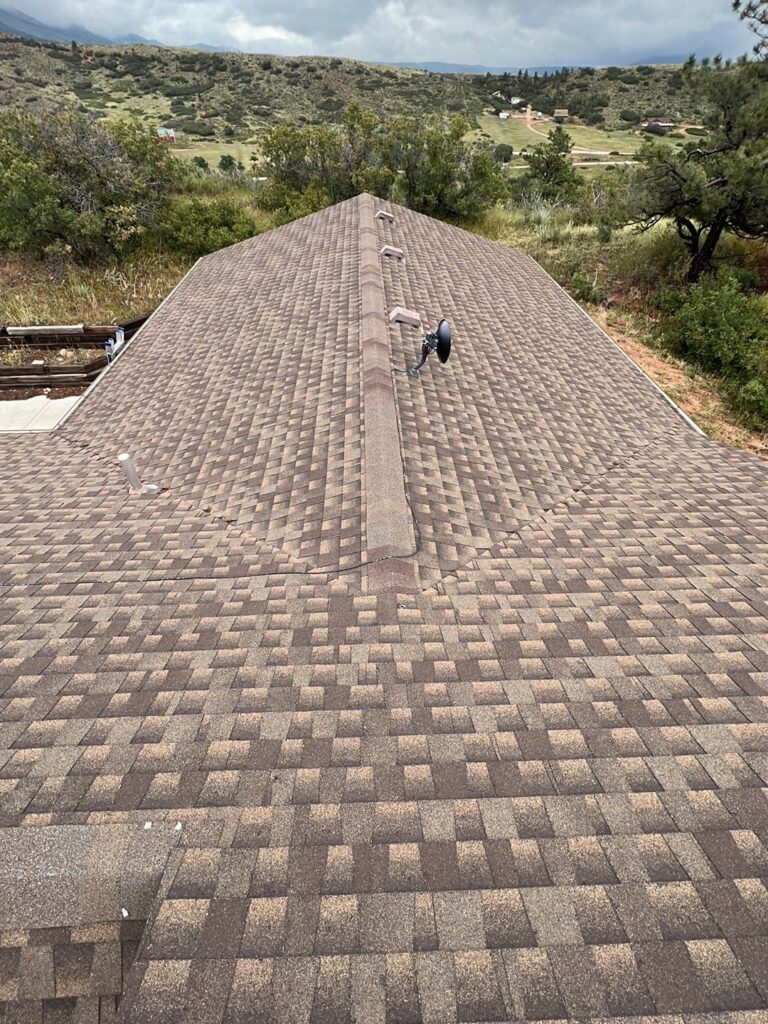Selecting the appropriate roofing underlayment is one of the most critical decisions in any roofing project. Whether planning a new roof installation or a roof repair in Denver, understanding the differences between synthetic roofing underlayment and traditional felt can significantly impact your roof’s longevity, durability, and performance.
What is Roofing Underlayment?
Roofing underlayment is a protective layer installed between the roofing deck and the final roof covering. Its primary function is to provide an additional moisture barrier, preventing leaks and water infiltration that could damage the structure beneath the roofing materials.
Felt Roofing Underlayment: Traditional and Proven
Composition and Variants of Felt Underlayment
Felt underlayment, often called tar paper, has been a roofing staple for decades. Manufactured from organic materials like wood cellulose fibers, it’s saturated with asphalt to increase water resistance.
Two common weight options are available:
- 15-pound felt: Lightweight and cost-effective.
- 30-pound felt: Thicker and more durable, offering better protection.
Advantages of Felt Roofing Underlayment
- Lower initial cost.
- Readily available in most markets.
- Provides basic water resistance.
- Suitable for low-budget roofing in Denver projects.
Drawbacks of Felt Roofing Underlayment
- Prone to tearing during installation.
- Limited water resistance compared to synthetic alternatives.
- Heavier material can increase labor costs.
- Less effective in severe weather conditions common in Denver.
Synthetic Roofing Underlayment: Modern Durability for Demanding Climates
Composition and Characteristics
Synthetic roofing underlayment is made from engineered polymers like polypropylene or polyethylene, woven together for enhanced strength and flexibility. It represents an evolution in roofing technology designed for superior performance.
Benefits of Synthetic Roofing Underlayment
- Exceptional water resistance.
- UV resistance for longer exposure times.
- Lightweight material allows faster installation.
- Resistant to mold and mildew.
- Provides a safer surface for roofing crews.
- Superior tear strength, crucial for windy Denver conditions.
Considerations for Synthetic Underlayment
- Higher upfront material cost.
- Non-biodegradable, though some options are recyclable.
- May require specific fasteners or installation methods.
Installation Comparison: Felt vs. Synthetic Underlayment
| Feature | Felt Underlayment | Synthetic Underlayment |
| Weight | Heavier | Lightweight |
| Coverage per Roll | Smaller area | Larger coverage rolls |
| Installation Speed | Slower | Faster |
| Durability During Install | Tears easily | High tear resistance |
| Water Resistance | Moderate | Superior |
Synthetic underlayment is the clear winner when speed, safety, and weather resistance are priorities — crucial factors in roofing Denver homes that face snow, hail, and wind challenges.
Performance in Harsh Weather Conditions
In Denver, Colorado, roofing systems must withstand fluctuating temperatures, snow accumulation, and high winds. Synthetic underlayment provides enhanced water-shedding abilities, maintaining its integrity even when exposed to moisture over extended periods.
Felt underlayment, while adequate for drier climates, may deteriorate faster under repeated wet-dry cycles common in Denver’s climate.
Longevity and Environmental Impact
Felt Underlayment Longevity
- Average lifespan: 10-20 years (dependent on roof design and local climate).
- Organic material composition makes it susceptible to rot and degradation.
Synthetic Underlayment Longevity
- Lifespan: 25-50 years with proper installation.
- Resists mold, mildew, and UV damage.
- Less frequent replacement reduces waste over time.
Environmental Considerations
- Felt is biodegradable but has a shorter useful life.
- Synthetic is often recyclable but not biodegradable.
Choosing the right material for roofing in Denver means balancing environmental responsibility with long-term performance.
Cost Comparison: Initial vs. Long-Term Value
| Cost Factor | Felt Underlayment | Synthetic Underlayment |
| Material Cost | Lower | Higher |
| Installation Labor | Higher due to weight | Lower due to ease of handling |
| Maintenance | May require frequent repairs | Minimal maintenance |
| Replacement Frequency | Sooner | Later |
While felt underlayment offers immediate savings, synthetic underlayment provides better long-term value through reduced maintenance and extended durability — a wise investment for homeowners seeking reliable roof repairs in Denver CO.
Choosing the Right Roofing Underlayment for Denver Homes
When deciding between synthetic and felt underlayment, homeowners should evaluate:
- Local weather patterns.
- Budget constraints.
- Long-term maintenance goals.
- Desired lifespan of the roofing system.
Denver roofers often recommend synthetic underlayment for its superior resistance to snow, ice, and wind — conditions prevalent in Colorado. For homeowners prioritizing upfront savings or working on a low-slope roof, felt underlayment may still be a viable option.
Trusted Installation by Roofing Experts in Denver
For the best results, roofing underlayment must be installed correctly by experienced professionals. Tried and True Roofing, a leading roofing company in Denver, Colorado, offers expert installation of both synthetic and felt underlayment systems tailored to withstand Denver’s demanding climate.
Conclusion
Both synthetic and felt roofing underlayments serve essential roles in protecting a roof. However, for homeowners in Denver seeking maximum durability, superior weather resistance, and long-term value, synthetic roofing underlayment stands out as the optimal choice. Always consult professional roofing contractors in Denver to ensure that your roofing project is executed to the highest standard, securing your home against the elements for years to come.


